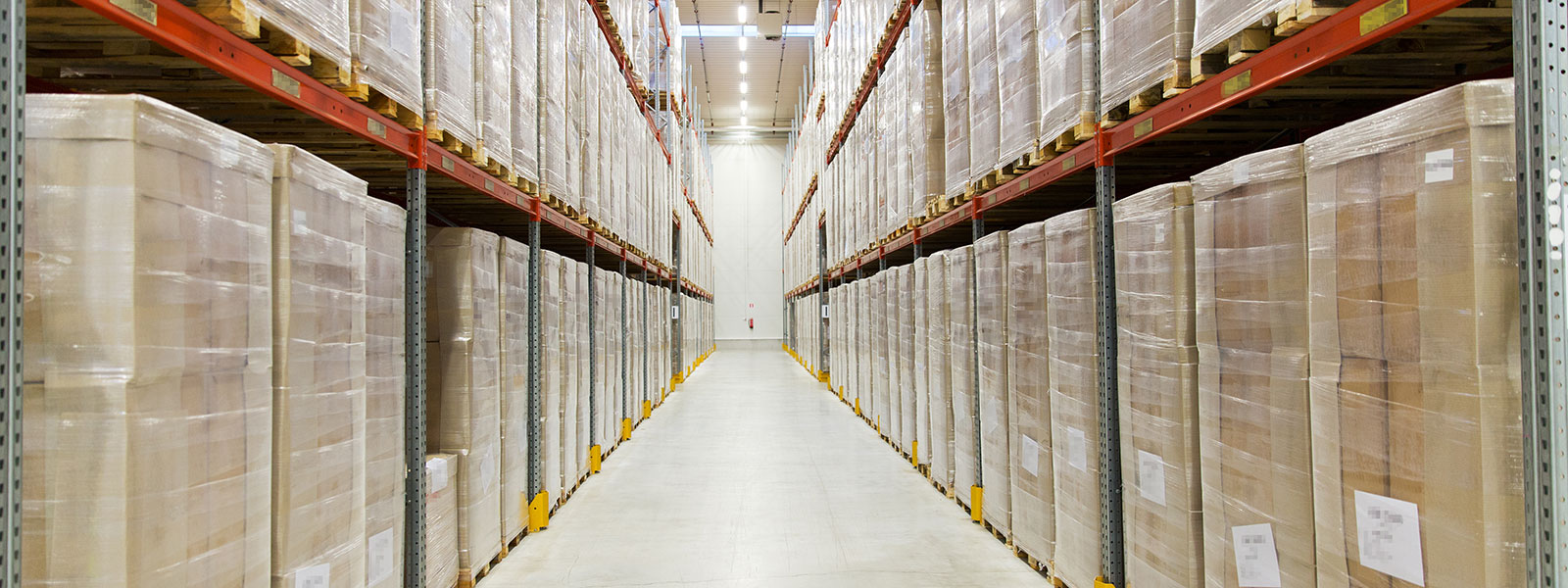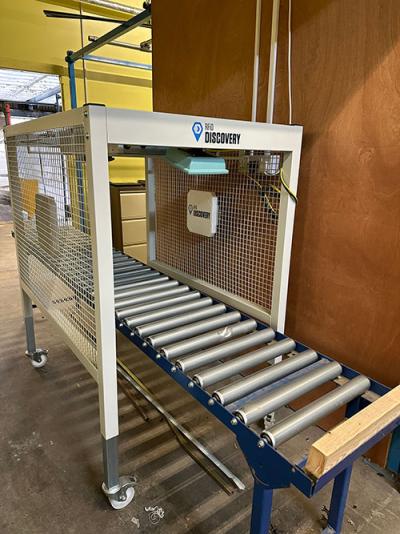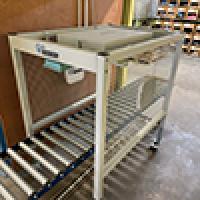Case Study: Brook Taverner
RFiD Discovery’s conveyor portal transforms goods-in checking procedure

The RFID conveyor portal can detect over 20,000 items per hour
Founded in 1912 and based in West Yorkshire (UK), Brook Taverner is Europe’s largest supplier of stock supported corporate clothing and a leading, highly respected menswear brand.
Thanks to the use of RFiD Discovery’s conveyor portal, the company recently transformed its goods-in checking procedure for the high volumes of clothing items received in bulk twice a month.
The challenges
With the regular arrival of container-loads of up to 25,000 products from overseas, Brook Taverner faced several challenges:
- Verifying whether all items included in the advanced shipping notification (ASN) were delivered was impossible with manual checks.
- Previous attempts of using RFID technology had failed due to difficulty reading all garments in closely packed boxes.
- Relying on spot checks for inventory verification proved inadequate and inaccurate.
- The company needed a solution that was compatible with their ERP system.

The solution
Recognising the need for an accurate and automated system, Brook Taverner turned to RFiD Discovery and implemented their RFID conveyor portal solution.
The primary goal was to achieve inventory accuracy at their distribution center while eliminating the need for manual checks.
During the trial on a shipment with an expected 22,194 items, RFiD Discovery’s portal successfully detected 22,144 items within 60 minutes. This helped to isolate the boxes deviating from the expected number. Upon investigation, it was discovered that 38 items were missing, and 12 shirts did not have RFID tags attached or tags were faulty.
This allowed Brook Taverner to take corrective action, ensuring stock accuracy. Notably, 100% of all items equipped with working RFID tags were successfully scanned, proving the system's ability to ensure comprehensive inventory verification.
Colin Seward, Senior Operations Manager, Brook Taverner, commented:
"RFiD Discovery's conveyor portal has revolutionized our goods-in verification process and substantially increased the accuracy of our warehouse inventory.
"It used to take us three hours to carry out manual spot checks on a typical shipment of up to 25,000 garments, inherently introducing potential errors. Now we can efficiently validate whether all expected items are present in less than one hour, savings us both time and money."
How does it work?
Each item of apparel is fitted with a UHF passive RFID tag at manufacture. For every delivery Brook Taverner receives an advanced shipping notification including tag identifiers with product details.
The RFID powered tunnel portal is integrated into Brook Taverner's existing logistics workflow. Here, it automatically scans all items passing through, providing real-time data on the presence or absence of RFID tags. With a speed of over 20,000 items per hour, it records all incoming stock and highlights when items are missing, or incorrect items are detected. By interfacing with Brook Taverner’s ERP system, the solution enables them to check whether all items listed in ASNs have actually been received.
Key benefits:
- Stock accuracy: Virtually eliminated inventory errors due to incorrect shipments received
- Real-time visibility: Highlights missing or incorrect items for prompt resolution
- Automated process: Reduced time and resources required for manual checks
- Cost savings and efficiency: Thanks to reduced need for manual verification and improved accuracy
Future plans
RFiD Discovery's RFID conveyor portal proved to be a game-changer for Brook Taverner, addressing their inventory management challenges with precision and efficiency.
The company now plans to implement further use of RFID to speed up shipping verification of outgoing goods and ensure correct items are sent to customers and their own stores.

